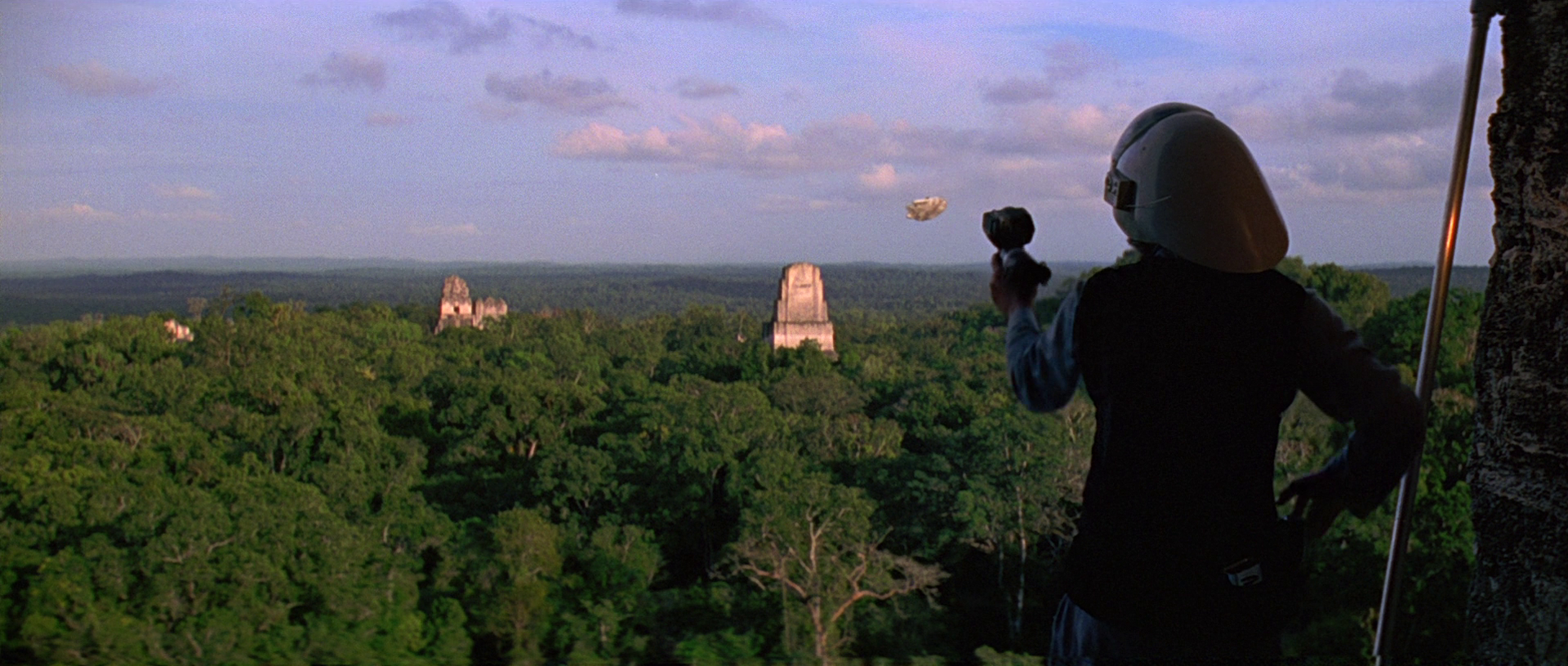We left San Ignacio Belize in the early morning and crossed the narrow bridge that represented the boarder into Guatemala. There were no guard houses, gates, or formal notification of the country change. In fact, if we didn’t know that we were changing countries, we would not have known that we had. We crossed the bridge and met our guide for the day on the other side. He drove us down a dirt highway passing jungle enclosed farmland. The northern part of Guatemala is lush rainforest. As we zig-zaged along the road, the guide pointed to mounds in the rainforest and say: “We have so much unexplored forest. Each of those mound represent Mayan temples reclaimed by the forest.” We stopped along the road at a small open air cafe for a light breakfast. Alyssa was two and was enchanted by Pancho the Parrot who hung out and watched us eat. The meal was not memorable but the hot chocolate was. A sludgy mix of freshly roasted and ground cacao with sugar cane made for a pick-me-up like I had never had before. It was without a doubt, the best cup of hot chocolate I had in my life. Sharleen and I still reminisce about this cup of hot chocolate decades later.
We drove a bit more and descended into the Tikal valley area. There were throngs of tourists, buses, and cars all wanting to experience this remaining piece of the great Mayan civilization. Our guide procured the tickets and we entered.
Tikal National Park is listed as a World Hertitage Site. It was big over sixteen square kilometers and 3000 structures.

We had one day to explore the many structures (A map of the complex). Monkeys draped languidly in the trees during the midday heat. Plenty of toucans and other birds made their presence known as we walked from temple to temple. Alyssa was too little to climb the steps on her own, so like the rest of the temples we had seen, I hoisted her on my shoulders and went up. Around the 100 foot marker, the structure rose about the forest canopy providing a panorama of the jungle.

This is from a similar standpoint as the iconic Star Wars movie scene but from a different time of day.

A view of Yavin in 1976
There were large and small groups as well as individuals. I heard many languages. From time to time individuals would stop and listen to their guide, and at others we joined a larger group, and then our guide would fill in more information after the groups dispersed. Between our walk around the structures, the guide told stories of every day life. Pointing out allspice and gum trees and various flora and fauna. At one point he showed us some ants with massive heads and mandibles. He claimed that when they bite and lock their mandibles it could be strong enough to act like stitches on a wound or could seam clothing. I’m not so sure about this claim, but those were big ants.

Our guide told us the people first settled in the Tikal area 300 BC, and the site was definitely abandoned by 1100 AD. This raised many questions. Why and where did they go were the two foremost questions. This was long before conquistadors arrived bringing disease and destruction to Mesoamerica. The guide claimed, that despite all the lush jungle growth, there were long periods of drought, and he believed historical climatic events forced Maya to disperse. Indeed to this end, research lends credence to the idea that cutting down large swaths of the jungle contributed to climatic change in the region (click here) He also claimed that the earliest Maya settlements were in the southern Belize at Carocal, and the most recent were in Chichen Itza in the Yucatan. However, according to historical accounts on line (click here). The sites throughout Central America represented city states that were in a constant struggle for dominance. By 900 AD most city sites had become abandoned. Our guide said the Maya didn’t disappear, they dispersed, migrating to different and more fertile areas.
When walking down a city street we do not marvel how it all happened. Great machines, distribution networks, and modernity help create a city what it is. We take the cranes, transportation, scaffolding, and home improvement stores for granted. However, when walking through Tikal, they had people power. The structures were every bit as high as modern structures. Each structure represents a lot of hand carving, chiseling, and heavy lifting. I’m also willing to bet there was not a paycheck at week’s end for the many builders of these awesome pyramids.
It was a lot to take in and think about on the long ride back to San Ignacio. Alyssa slept in my lap as I looked out of the jungle. What will our legacy be in a thousand years. Will our structures stand? What will remain after our paper rots away and electronic devices corrode into waste. What will future archaeologists be telling people about 2007? Just like scientists today argue that Mayan’ brought about their own demise, are we also sewing the seeds of our destruction?